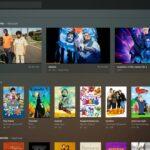The decline of cable TV in favor of streaming services has been a topic of discussion for several years now, with many experts predicting its demise. In this article, we will explore the factors contributing to the shift from traditional cable TV to streaming services and discuss the implications for the future of television broadcasting.
Technology and the Rise of Streaming Services
One of the primary factors driving the decline of cable TV is the emergence of streaming services like Netflix, Hulu, and Amazon Prime. These platforms have enabled viewers to access a wide range of content on-demand without a traditional cable or satellite subscription. The convenience and affordability of streaming services have made them increasingly popular among consumers, especially younger generations who are more tech-savvy and less interested in traditional cable TV.
Demographics and Changing Viewing Habits
Another factor contributing to cable TV’s decline is the changing demographics of viewers. As older generations fade away and younger, more tech-savvy generations mature, the cable TV industry may experience a significant decrease in subscribers and viewership. Statistics suggest that older generations are less likely to use over-the-top (OTT) content, while younger generations are more likely to consume content through streaming services. This shift in viewing habits is expected to impact the cable TV industry in the coming years dramatically.
The Impact on Companies in the Cable TV Industry
As the aging generation dies off, the total number of TV subscribers could fall substantially, leading to less video subscriber revenue for companies like Comcast, less advertising revenue for CBS, and less affiliate fee revenue for Disney. However, some companies have adjusted their assets to prepare for the decline of cable. For example, Disney purchased a 27% stake in Hulu in 2009, which has seen increased revenue as people watch more Hulu and less cable TV. Comcast is also expanding its Internet service business to compensate for declining cable subscriber revenue.
The Evolution of Television Broadcasting
Traditional TV networks must adapt and embrace the digital age to remain relevant in the digital age. This includes exploring alternative revenue models and wholeheartedly integrating with streaming platforms. The rise of streaming services has also led to original content production by these platforms, challenging the conventional content distribution method and luring top-notch talent. As a result, several critically acclaimed films and series have been produced by streaming platforms, making viewers sign up for these services.
The Future of Broadcasting
The future of broadcasting is the hybrid model that combines streaming services with traditional television. Although conventional broadcasters still have an opportunity to leverage their strengths in fields like sports, live events, and news coverage, they must adapt to the changing landscape to remain relevant. This includes exploring partnerships with established streaming brands or ad-supported streaming sites to survive in the digital age.
In conclusion, the decline of cable TV in favor of streaming services is likely to continue. As technology advances and viewing habits change, traditional TV networks must adapt and embrace the digital age to remain relevant. The future of broadcasting will likely be a hybrid model combining streaming services with conventional television, allowing viewers to access content on their terms.
Citations:
[1] https://www.fool.com/investing/general/2014/07/28/2-factors-leading-to-the-demise-of-cable-tv.aspx
[2] https://www.reddit.com/r/cordcutters/comments/19ff1o7/do_you_guys_think_streaming_services_are_turning/
[3] https://www.spoilertv.com/2023/10/the-true-impact-of-streaming-services.html?m=1
[4] https://www.reddit.com/r/cordcutters/comments/18rq5pk/is_cable_tv_going_to_make_a_comeback/
[5] https://blog.promotix.com/cable-and-on-demand-streaming
[6] https://www.sfjesgs.com/index.php/SFJESGS/article/viewFile/453/452
[7] https://www.thewilkesbeacon.com/opinion/2023/09/13/the-rise-and-fall-of-streaming-services/
[8] https://www.spglobal.com/marketintelligence/en/news-insights/research/streaming-video-revolution-traditional-media-adapts-to-a-digital-shift
[9] https://variety.com/2020/tv/news/cable-tv-decline-streaming-cord-cutting-1234710007/
[10] https://www.miamistudent.net/article/2023/10/cable-to-streaming-netflix-hulu-disney-youtube-television
[11] https://www.emarketer.com/content/price-hikes-dominated-streaming-2023
[12] https://www.reddit.com/r/television/comments/141bzz7/cable_tv_subscribers_have_fallen_to_1980s_levels/
[13] https://gitnux.org/streaming-vs-cable-statistics/
[14] https://www.linkedin.com/pulse/future-streaming-how-services-changing-entertainment-industry
[15] https://timesofindia.indiatimes.com/blogs/voices/the-impact-of-streaming-services-on-traditional-tv-and-the-future-of-the-industry/?frmapp=yes
[16] https://digitalagencynetwork.com/the-impact-of-streaming-services-on-the-entertainment-industry/
[17] https://www.cnbc.com/2023/08/15/traditional-tv-usage-drops-below-50percent-for-first-time-ever.html
[18] https://www.surveymonkey.com/curiosity/how-do-consumers-feel-about-streaming-services-vs-cable/
[19] https://www.cnn.com/2023/08/15/media/cable-broadcast-tv-decline-nielsen-report/index.html
[20] https://vocal.media/geeks/the-impact-of-streaming-services-on-traditional-television-7rmw0p6o






